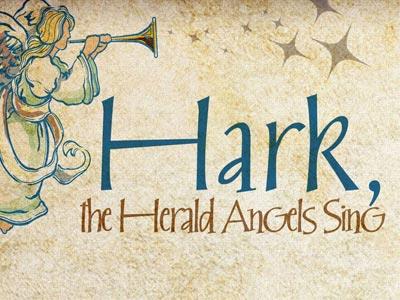-
God In A Manger Series
Contributed by Freddy Fritz on Nov 28, 2017 (message contributor)
Summary: Christmas is not primarily about Jesus’ infancy. Christmas is primarily about Jesus’ deity. This sermon observes several truths which affirm Jesus’ deity.
Scripture
The most common pattern for planning worship services in Christian churches throughout the centuries has been through the use of the Christian calendar.
The Christian calendar, developed in antiquity, was the way in which churches worshiped up until the Reformation. After the Reformation Protestants largely abandoned the Christian calendar because of the abuses attached to it in the Medieval Period.
Protestants noted that nearly every day of the year had been named after a saint. There was such a tremendous emphasis on saints and the feasts associated with them that the life of Jesus was overshadowed and obscured. Consequently, many Protestants discontinued using the Christian calendar.
Recently, however, Protestants—and even some Reformed Churches—have started using a simple and unadorned Christian calendar. This Christian calendar accents the major events in the life of Jesus, such as Advent, Christmas, Epiphany, Lent, Holy Week, Easter, and Pentecost. This Christian calendar is in fact similar to the Christian calendar used in the Early Church.
The Christian calendar begins with Advent. The word advent means “coming.” Advent signifies the period preceding the birth of Jesus when the Church anticipates the coming of the promised Messiah. The purpose of Advent is to help worshipers understand the events preceding the birth of Jesus. Historically, Advent spans a four-week season before Christmas.
Today, then, is the first Sunday of Advent. I would like to preach a series of Advent messages on “The Marvel of Christmas.” My sermon for today is titled “God in a Manger.” Much of the material for this series of messages is from John MacArthur’s book titled God with Us: The Miracle of Christmas.
My text for today can be found in Colossians 1:15-20:
"15 He is the image of the invisible God, the firstborn over all creation. 16 For by him all things were created: things in heaven and on earth, visible and invisible, whether thrones or powers or rulers or authorities; all things were created by him and for him. 17 He is before all things, and in him all things hold together. 18 And he is the head of the body, the church; he is the beginning and the firstborn from among the dead, so that in everything he might have the supremacy. 19 For God was pleased to have all his fullness dwell in him, 20 and through him to reconcile to himself all things, whether things on earth or things in heaven, by making peace through his blood, shed on the cross" (Colossians 1:15-20).
Introduction
When Lauren was four years old she was old enough to know about and anticipate Christmas. In the weeks leading up to Christmas that year I would often ask her, “Lauren, what is Christmas?”
“Christmas is when baby Jesus was born,” Lauren would answer.
Then I would ask a second question, “And who is baby Jesus?”
“Baby Jesus is God’s Son.”
In that short little discussion with Lauren I was trying to impress on her the true meaning of Christmas.
You see, our culture has no trouble accepting Lauren’s first answer: Christmas is when baby Jesus was born. Christmas for our culture is simply the celebration of a baby named Jesus.
But our culture does have trouble with Lauren’s second answer: Baby Jesus is God’s Son. Our culture is not prepared to affirm that statement.
However, it is the answer to the second question that gives Christmas its true significance. Baby Jesus is God’s Son. Christmas is not merely the birth of a baby. Christmas is the celebration of God’s entry into our world.
Our culture shifts the true focus of Christmas to the infancy of Jesus, whereas the true focus of Christmas is actually on the deity of Jesus.
Our culture will sing about the birth of a baby, but will reject Jesus as God come in the flesh.
Our culture will sing about his nativity, but will reject his authority.
Our culture will adore him as an infant, but will not bow down to him as God.
Our culture will embrace the accompanying events of Christmas—the manger, shepherds, wise men, angels, Joseph and Mary—but will not believe the advent of God in human flesh.
Lesson
Christmas is not primarily about Jesus’ birth, infancy, and nativity. Christmas is about God’s incarnation. Christmas is about God’s advent in human flesh. Christmas is about God in a manger.
Today, let’s observe several truths which affirm Jesus as God in a manger.
I. Jesus Is the Image of God (1:15a)
First, Jesus is the image of God.
Speaking of Jesus, the apostle Paul wrote in Colossians 1:15a, “He is the image of the invisible God.”
The Greek word for image is eikon. It means a perfect replica, a precise copy, a duplicate—something even more like the original than a photograph.
Sometimes the Greek word eikon meant picture, like when an ancient soldier sent a portrait to his father with the note, “I sent you a little portrait (eikonion) of myself painted by Euctemon.”

 Sermon Central
Sermon Central



